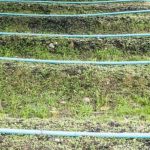Cover crops play a crucial role in maintaining the health and productivity of vegetable gardens. Understanding the best cover crops for vegetable gardens is essential for improving soil fertility, managing pests and diseases, and promoting overall garden sustainability. In this article, we will explore the importance of cover crops in vegetable gardens and provide valuable insights into the benefits, selection, and management of cover crops to enhance the health of your garden.
The use of cover crops is an age-old practice that has gained newfound popularity among modern-day gardeners due to its numerous benefits. From improving soil structure and nutrient retention to suppressing weeds and managing pests, cover crops offer a sustainable solution for enhancing vegetable garden production. In this article, we will delve into the advantages of incorporating cover crops into your gardening practices, with a focus on how they contribute to soil health, nutrient retention, and weed suppression.
As we explore the best cover crop options for boosting soil fertility and managing pests and diseases in vegetable gardens, you will gain valuable insights into selecting the right cover crops for your specific needs. Whether you are looking to enrich your soil with nitrogen-fixing legumes like clover and peas or manage pests with mustard and radish, this article will provide you with practical guidance on choosing the most suitable cover crops for your vegetable garden.
Benefits of Using Cover Crops in Vegetable Gardens
Improved Soil Structure
One of the key benefits of using cover crops in vegetable gardens is the improvement of soil structure. This can be especially crucial in areas with heavy clay soils or sandy soils, where soil structure may not be ideal for growing healthy plants.
Cover crops like clover and peas have deep root systems that help break up compacted soil, allowing for better water infiltration and air movement. This improved soil structure also promotes the growth of beneficial microorganisms that contribute to overall soil health.
Nutrient Retention
Another important aspect of cover crops in vegetable gardens is their ability to retain nutrients in the soil. Legumes, such as clover, peas, and vetch, have a unique ability to fix nitrogen from the atmosphere into a form that can be easily utilized by other plants.
When these cover crops are incorporated into the soil, they release this nitrogen, providing a natural fertilizer for your vegetable garden. Additionally, cover crops help prevent nutrient leaching, keeping essential nutrients like phosphorus and potassium from being washed away by rain or irrigation.
Competition for Resources
Weed suppression is another major advantage of using cover crops in vegetable gardens. By planting dense cover crops like mustard and radish, you create competition for resources such as sunlight, water, and space that would otherwise be available to weeds. This can significantly reduce weed pressure in your garden beds without relying on chemical herbicides. Additionally, some cover crops release compounds that inhibit weed seed germination or growth, further reducing weed populations in your vegetable garden.
Incorporating cover crops into your vegetable garden not only contributes to improved soil health and nutrient retention but also helps with weed suppression, ultimately creating a healthier environment for your vegetables to thrive. By choosing the best cover crops for your specific needs and climate, you can effectively boost the fertility of your soil while managing pests and diseases more sustainably.
Best Cover Crops for Boosting Soil Fertility
When it comes to boosting soil fertility in vegetable gardens, cover crops play a crucial role. Legumes, such as clover and peas, are among the best cover crops for this purpose. These plants have the unique ability to fix nitrogen from the atmosphere into a form that can be used by other plants, making them invaluable for improving soil health and promoting robust growth of vegetables.
Here are some of the best legume cover crops that you can consider incorporating into your vegetable garden rotation plan:
- Clover: Clover is a popular choice for cover cropping due to its ability to add nitrogen to the soil. It also has a deep root system that helps improve soil structure and water retention.
- Peas: Peas are not only a delicious vegetable but also an excellent cover crop. They can fix nitrogen into the soil and their dense growth helps suppress weeds and prevent erosion.
Incorporating these legume cover crops into your vegetable garden rotation plan can have numerous benefits for your plants. Not only will they enrich the soil with essential nutrients, but they will also help improve overall soil structure, leading to healthier and more productive vegetables.
When planting legume cover crops, it’s important to follow best practices for successful establishment and maintenance. Proper timing of planting, adequate watering, and regular monitoring are key factors in ensuring that these cover crops thrive and benefit your vegetable garden. With careful planning and attention to detail, you can harness the power of legume cover crops to boost soil fertility and enhance the overall health of your vegetable garden.
Cover Crops for Managing Pests and Diseases in Vegetable Gardens
When it comes to managing pests and diseases in vegetable gardens, cover crops can play a crucial role in preventing and controlling such issues. Two of the best cover crops for this purpose are mustard and radish. These cover crops not only help with pest and disease management, but also contribute to overall soil health and fertility.
Mustard is known for its ability to suppress soil-borne pathogens and nematodes, making it an excellent choice for managing diseases in vegetable gardens. It has biofumigant properties that release compounds toxic to certain pests and pathogens when incorporated into the soil. This makes mustard an effective natural defense against harmful organisms that can damage vegetable crops.
Similarly, radish is another cover crop that can aid in pest and disease management in vegetable gardens. It has been found to suppress certain soil-borne diseases and nematodes, ultimately benefiting the health of the plants in the garden. Additionally, radish cover crops help break up compacted soil, improve drainage, and scavenge nutrients – all of which contribute to a healthier growing environment for vegetables.
Both mustard and radish cover crops have proven to be valuable assets in managing pests and diseases while enhancing soil health in vegetable gardens. By incorporating these cover crops into your garden rotation plan, you can take proactive measures to ensure a thriving and productive growing space for your vegetables.
| Best Cover Crops | Purpose |
|---|---|
| Mustard | Suppresses soil-borne pathogens and nematodes |
| Radish | Suppresses certain soil-borne diseases, improves drainage, scavenges nutrients |
Seasonal Cover Crop Selection for Vegetable Gardens
When it comes to selecting the best cover crops for vegetable gardens, it’s important to consider the seasonal options that will best suit your garden’s needs. Cover crops can play a crucial role in maintaining soil health and fertility, as well as managing pests and diseases. Since different cover crops thrive in different seasons, it’s essential to understand the benefits of both summer and winter options.
During the summer months, when the vegetable garden is in full swing, it’s important to choose cover crops that can thrive in the heat and help maintain soil moisture. Some of the best cover crops for summer include buckwheat, millet, and cowpeas. These warm-season cover crops not only provide protection for the soil but also help with weed suppression and nutrient retention. Additionally, they can improve soil structure and add organic matter, ultimately benefiting your vegetable garden.
On the other hand, when the growing season comes to an end and winter approaches, it’s crucial to select cover crops that can survive low temperatures and continue to benefit your vegetable garden. Winter rye, winter wheat, and hairy vetch are excellent choices for winter cover crops.
These cold-tolerant options help prevent erosion during the winter months while also contributing to soil fertility through nitrogen fixation. By incorporating these winter cover crops into your vegetable garden rotation plan, you can ensure that your soil remains healthy and ready for planting when spring arrives.
How to Incorporate Cover Crops Into Your Vegetable Garden Rotation Plan
When it comes to incorporating cover crops into your vegetable garden rotation plan, the key is to carefully consider the specific needs of your garden and the goals you want to achieve. One of the best cover crops for vegetable gardens is legumes, such as clover and peas.
These crops are known for their ability to boost soil fertility by fixing nitrogen from the air into a form that is readily available to other plants. This makes them an excellent choice for replenishing nutrients in the soil after heavy feeding by vegetable crops.
Another important aspect to consider when choosing cover crops for your vegetable garden rotation plan is managing pests and diseases. Mustard and radish are two excellent options for this purpose, as they have natural fumigant properties that can help suppress nematode populations and reduce the incidence of certain soil-borne diseases. By incorporating these cover crops into your rotation plan, you can effectively manage pests and diseases while improving overall soil health.
In addition to selecting the right cover crops for your vegetable garden, it’s also crucial to carefully plan the timing of planting and termination of cover crops. For summer options, warm-season grasses like sorghum-sudangrass can provide excellent weed suppression and groundcover during the hot months. For winter options, cereal rye and hairy vetch are popular choices for providing protective cover during the colder months while also adding organic matter to the soil.
| Cover Crop | Main Benefit |
|---|---|
| Legumes (Clover, Peas) | Boost soil fertility by fixing nitrogen |
| Mustard, Radish | Suppress pests and diseases with natural fumigant properties |
| Sorghum-Sudangrass, Cereal Rye, Hairy Vetch | Provide weed suppression and groundcover (summer) / protective cover and organic matter (winter) |
Tips for Successful Establishment and Maintenance of Cover Crops
When it comes to using cover crops in your vegetable garden, successful establishment and maintenance are key to reaping the benefits. Whether you’re looking to improve soil health, manage pests and diseases, or boost fertility, following some tips can help ensure that your cover crops thrive.
Choose the Right Cover Crop for Your Goals
The first step in successful establishment of cover crops is selecting the right one for your specific goals. If you’re aiming to boost soil fertility, legumes such as clover and peas are excellent choices due to their ability to fix nitrogen.
On the other hand, if you’re looking to manage pests and diseases, mustard and radish can help suppress certain problematic organisms in the soil. By understanding the benefits of each type of cover crop, you can make an informed decision that aligns with your garden’s needs.
Timing Is Everything
Choosing the right time to plant your cover crops is crucial for their success. For summer cover crops, planting them before the hottest part of the year can help them establish and provide benefits during the growing season. In contrast, winter cover crops should be planted in late summer or early fall so they have time to grow before cold weather sets in. Consider your local climate and frost dates when planning the timing for your cover crop planting.
Proper Maintenance Is Key
Once your cover crops are established, proper maintenance is essential for their success. This includes regular watering if rainfall is insufficient, as well as monitoring for any signs of pests or diseases that could impact their growth. Additionally, some cover crops may require trimming or mowing at certain points to prevent them from getting out of control. By staying on top of maintenance tasks, you can ensure that your chosen cover crops continue to provide benefits for your vegetable garden.
By following these tips for successful establishment and maintenance of cover crops in your vegetable garden, you can maximize their impact on soil health, nutrient retention, weed suppression, and more.
Case Studies and Success Stories
In conclusion, cover crops can play a significant role in boosting the health and productivity of vegetable gardens. By understanding their importance and benefits, gardeners can make informed decisions about which cover crops to incorporate into their garden rotation plans.
One of the best cover crops for vegetable gardens is legumes, such as clover and peas, which can help boost soil fertility by fixing nitrogen. These cover crops also provide excellent weed suppression and improve soil structure, making them a popular choice among gardeners looking to improve the health of their soil.
Additionally, mustard and radish are great options for managing pests and diseases in vegetable gardens. These cover crops have been shown to naturally suppress nematodes and other harmful pathogens, leading to healthier plants and higher yields. By incorporating these pest-fighting cover crops into their rotation plans, gardeners can reduce the need for chemical pesticides while improving overall garden health.
Overall, by carefully selecting seasonal cover crop options and following tips for successful establishment and maintenance, gardeners can experience firsthand the benefits of using cover crops in their vegetable gardens. With proper planning and implementation, success stories abound, demonstrating how cover crops have transformed ordinary gardens into thriving havens of productivity and sustainability.
Frequently Asked Questions
What’s a Good Cover Crop for a Vegetable Garden?
A good cover crop for a vegetable garden is clover. It helps to suppress weeds, improve soil structure, and add nutrients. Clover also attracts beneficial insects, making it an excellent choice for a vegetable garden.
What Is the Best Cover Crop for Tomatoes?
The best cover crop for tomatoes is hairy vetch. This legume cover crop not only fixes nitrogen in the soil but also helps suppress weeds and improve soil health. Its ability to provide nutrients makes it ideal for growing tomatoes.
What Cover Crop Fixes the Most Nitrogen?
The cover crop that fixes the most nitrogen is crimson clover. It has a high nitrogen-fixing capacity, making it an excellent choice for replenishing the soil’s nutrient levels. Crimson clover also adds organic matter to the soil as it decomposes, further improving its fertility.

If you’re looking to get into vegetable gardening, or are just looking for some tips on how to make your current garden better, then you’ve come to the right place! My name is Ethel and I have been gardening for years. In this blog, I’m going to share with you some of my best tips on how to create a successful vegetable garden.





